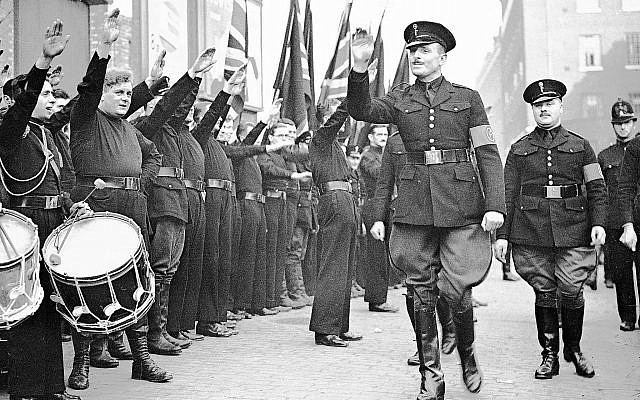By Cain O’Mahony
There has been shock amongst the political diaspora that senior Conservatives – a former Prime Minister, a Vice-Chair of the party, a former Home Secretary – could openly peddle the tropes of the far right. We should not be surprised – the Conservatives have openly flirted with fascism before. Ninety years ago, large sections of the Conservative Party considered backing the newly formed British Union of Fascists, and a fascist dictatorship. [Main photo credit – see end of article]
In 1931, the Labour Prime Minister Ramsey MacDonald shocked the labour movement by instigating what can only be described as a ‘parliamentary coup’, by subverting the minority Labour government, and, with support of the King, the Conservatives and Liberals, formed a National Government. He then called a panic-mongering, snap General Election in which Labour was heavily defeated (see ‘The 1931 National Government and lessons for today’, 26 October 2021).
In the new decade of the 1930s, British capitalism feared for its survival. The Wall Street Crash had wrecked the economy, unemployment had rocketed to three million, and Labour were on the advance. Their fear was that this era of capitalism in crisis would push a Labour government, under pressure from the masses, far to the left and they would introduce socialist policies. Hence the ‘National Government’ coup.
But they knew this could only be a temporary defence, as the masses were quickly seeing the National Government for what it was: a Conservative government in disguise. To underline this, the Conservatives were rocked by two by-elections in 1932 in which Labour won back the seats, the most notable victory being in East Fulham, where a Conservative majority of 14,000 swung to a 5,000 strong Labour one.
In this growing instability, British capitalism looked with envy to the ‘firm hand’ of Mussolini in Italy and Hitler in Germany in crushing the labour movement. And now, in early 1934, they had seen the conservative Chancellor of Austria, Englebert Dollfuss of the Christian Social Party, decide to take the road of dictatorship, liquidating the Austrian Social Democratic Party in a short bloody civil war. Perhaps Britain’s new breed of fascists, the newly formed British Union of Fascists led by Oswald Mosley, could achieve the same for Britain?
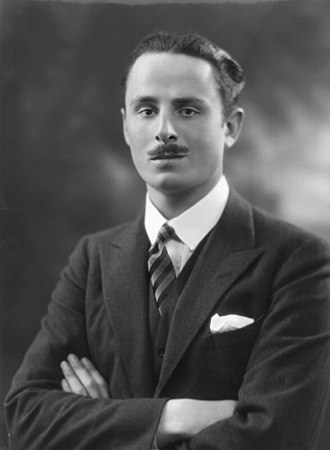
[Photo ref – here]
Mosley had been studying Hitler’s rise to power. Hitler had abandoned the putschist method that had worked for Mussolini, and instead saw the route to power by climbing on the back of conservative German nationalism and – as its support withered away – replace it. Meanwhile Hitler created groups such as the ‘Circle of Friends of the Economy’, in order to strengthen ties between prominent conservative industrialists and members of Hitler’s inner circle.
January Club
So leading Conservatives and Mosley proposed a similar ‘meeting of the minds’. The result was formed on New Year’s Day 1934 and was called the ‘January Club’. Its role, as the author Martin Pugh says, was to put in concrete what had already been seen:
“… a discreet traffic of ideas and personnel (which) had developed between fascism and the Conservative right wing” (Hurrah for the Blackshirts!’, Martin Pugh, 2005).
The January Club quickly built up much support and sympathy amongst the Conservative Party, with many MPs, influential lords and ladies, senior military figures and industrialists joining it. The Conservative MP for Barnard Castle, Cuthbert Headlam, summed up the view of those many Conservatives who joined:
“It seems to me that many of us might well fall in with a fascist coup d’etat, preferring a bourgeois revolution than a proletarian one” (Cuthbert Headlam Diary, 13 February 1934).
Big business began to get involved too, bringing in financial support and attending the Club’s meetings to hear BUF speakers and Mosley himself. It included the big names of the period such as Vickers, Morgan Grenfell, the military aircraft manufacturer Handley Page, Siemens, London Assurance and Caxton Electrics.
More importantly, some media barons joined the January Club too. Lady Houston was an early recruit, bringing with her ownership of the Saturday Review, a popular weekend journal that soon gushed sympathy for the fascists. At one point, Lady Houston was considering funding a daily BUF newspaper.
The big prize, though, was Lord Rothermere. He was the owner of not only the country’s largest selling newspaper of the time, the Daily Mail, but also the Evening News and the Sunday Dispatch, as well as several large provincial newspapers. Although he was in the process of selling his ownership of the Daily Mirror and its Sunday companion the Sunday Pictorial, in early 1934 these papers also followed the ‘Rothermere line’ in its political outlook.
Even before the January Club had been launched, the Sunday Dispatch was already being dubbed the ‘house journal of the BUF’. However, Rothermere then took it further and on 19 January launched a six-month campaign of support for the fascists in the Daily Mail, urging its readers to join the BUF.
“Hurrah for the Blackshirts!”
The Daily Mail campaign was launched with the notorious article by Lord Rothermere headlined: ‘HURRAH FOR THE BLACKSHIRTS!’ (incidentally, the same article was published in the Daily Mirror, but under the headline of ‘Give the Blackshirts a helping hand’).
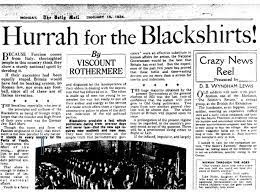
This brought derision and cries of hypocrisy from the labour movement, because for the past decade the Daily Mail had been denouncing socialism as an ‘alien’, foreign and ‘un-British’ concept. Now here it was, backing an ‘Italian’ political concept. Clearly stung, Lord Rothermere explained his about-turn in the opening introduction of the infamous article (with an antisemitic dog whistle thrown in for good measure):
“Because fascism comes from Italy, short-sighted people in this country think they show a sturdy national spirit by deriding it. If their ancestors had been equally stupid, Britain would have had no banking system, no Roman law, nor even any football, since all of these are of Italian invention.
“The socialists especially, who jeer at the principles and uniform of the Blackshirts as being of foreign origin forget that the founder and High Priest of their own creed was the German Jew Karl Marx.”
Lord Rothermere and his Conservative supporters were not just backing a ‘foreign concept’ – these ‘patriots’ were calling for support to an organisation being heavily funded by a hostile foreign government!
Everyone knew Mussolini was bank-rolling the BUF, and when the British security services eventually released details – after the BUF had outlived its usefulness as an auxiliary to British capitalism – they were staggering sums. The funding channelled to the BUF from the Italian dictatorship is outlined below (with its equivalent value today in brackets):
1931 – 1933: £60,000 (£5.3 million)
1934: £77,800 (£6.9 million)
1935: £86,000 (£7.6 million)
1936: £43,000 (£3.8 million)
For the moment though, the Daily Mail campaign continued boosting recruitment for the BUF by several thousands, while its main aim was to make the coming fascist alternative palatable to traditional Conservative members and voters. Their aim was to make the political direction of Conservatism and fascism as one, in that a dictatorship was the logical next stage.
An article in the Daily Mail headlined ‘The Blackshirts have what the Conservatives need’, by Conservative MP Sir Thomas Moore, said the BUF was merely a “virile offshoot” of the Conservative Party. Moore assured readers:
“There (is) little, if any, policy which could not be accepted by the most loyal followers of our present Conservative leaders… if my analysis is correct, surely there cannot be any fundamental difference of outlook between the Blackshirts and their parents the Conservatives” (Daily Mail, 25 April 1934).
Cosy relationship
The cosy relationship between the Conservatives and the BUF came to an abrupt halt in June however.
Firstly, Mosley shot himself In the foot with a display of thuggery at his mass rally at Olympia on 7 June 1934. Over 12,000 packed into the Nuremburg rally style event, including an incredible 150, mainly Conservative, MPs. Anti-fascist hecklers had been anticipated, and the BUF had rigged up spotlights: when small groups of anti-fascists voiced protests, they were immediately ‘lit up’ by the spotlights and set upon by rubber-cosh-wielding Blackshirts and beaten senseless before the stunned audience (and media newsreels). Mosley was putting on a show of his fascist methods.
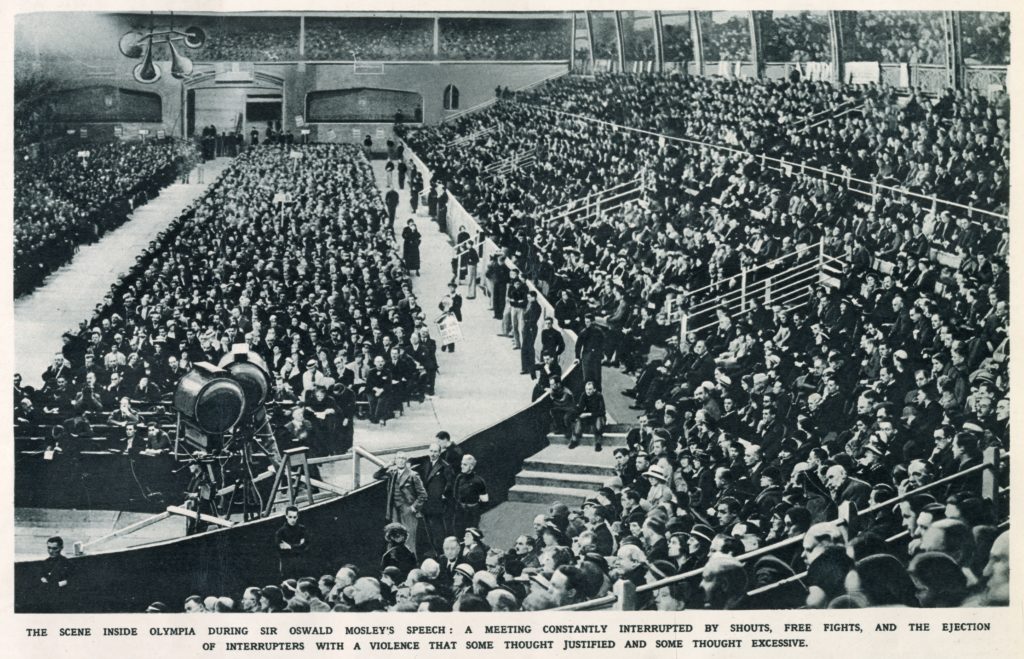
[Photo – Wienerholocaustlibrary.org]
If pro-fascist Conservatives were beginning to have doubts, the next shock came a few weeks later.
On 30 June 1934, Hitler carried out the ‘Night of the Long Knives’ when he brutally liquidated the leadership of his paramilitary wing, the Sturmabteilung (SA), led by Ernst Rohm, who Hitler feared as a rival.
But it is often forgotten that the SA were not the only targets in that purge – Hitler also liquidated all those right-wing Conservatives who had helped him climb to power.
Vice-Chancellor Franz von Papen, leader of the Catholic Centre Party, had been appointed by Hitler to give the new Nazi regime a very thin veneer of ‘respectability’, but who he now saw as a possible future threat, being the political representatives of the German bourgeoisie. Von Papen saw all his general staff murdered in an SS raid on the Vice-Chancellery, while von Papen himself was arrested. The former Chancellor, General Kurt von Schleicher, was murdered in his home with his wife. The national and provincial leaderships of both Catholic Action and the Catholic Centre Party were wiped out, their bodies turning up in ditches across Germany. Both organisations dissolved themselves on Hitler’s orders a few days later.
As if to underline the threat, the Conservatives’ role model of Englebert Dollfuss was also assassinated by Nazis in Vienna a month later.
British Conservatives began to look nervously over their shoulders at their new black-shirted friends, and began to have second thoughts about handing them power. More importantly, the British ruling class wanted the Conservative-BUF alliances like the January Club or the Daily Mail campaigns reeled in – far from subduing or intimidating the working masses, it was driving them to fury.
Mass counter-protests
Two years before the later major street battles of Cable Street and Bermondsey in 1936, the BUF was already provoking mass counter-protests, with huge demonstrations against attempts to hold BUF rallies in Sheffield, Hull, Leeds and Newcastle-upon-Tyne.
The most significant counter-demonstration came in September 1934 in Hyde Park. Around 3,000 uniformed BUF members were to be addressed by Mosley, but instead had to be protected by a cordon of 6,000 Police – both police and BUF were surrounded by 150,000 anti-fascists. In this corner of London, the state lost control and the BUF could only be extracted after negotiations with the mass of workers.
The Conservatives and Rothermere dropped the pro-fascist experiment, and membership of the January Club withered away. But while it had abandoned fascism at home, the new strategy was to help build fascism in Europe as a bulwark against the Soviet Union and the threat of revolution, particularly after the victory of the Popular Front government in France.
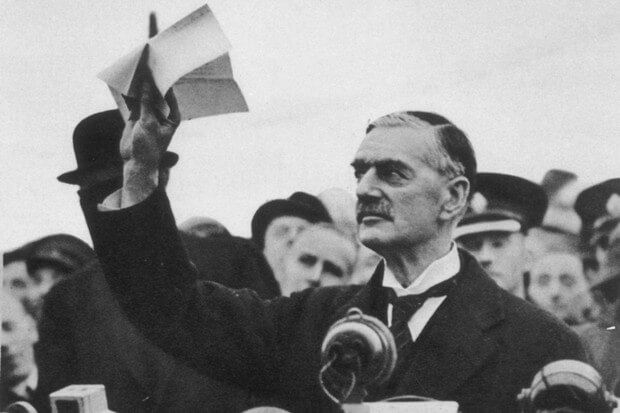
after his Munich his deal with Hitler in 1938 “peace for our time”
Today, the history books use the benign term of ‘appeasement’ for this period, laying all the blame at the feet of Neville Chamberlain as though it was he and he alone who pursued this path. In reality, it was not appeasement but British imperialism actively aiding and abetting the European fascist states, and not just Chamberlain but the previous Conservative Prime Minister Stanley Baldwin too, and all the hierarchy of the Conservative Party.
Their strategy is best summed up by Henry ‘Chips’ Channon, who declared in 1936:
“We should let gallant little Germany glut her fill of the Reds in the East and keep decadent France quiet while she does so” (Nicholson, Diaries and Letters, 1968).
Aiding and abetting fascism
Channon was no low ranking, fringe Conservative, but a leading member who led the British delegation to the League of Nations during the Munich Crisis of 1938. He summed up what was the Conservative position. Let us look at the facts:
- 1935: Hitler re-arms and occupies the Saar territory. Britain does nothing. Rather it signed the Naval Treaty in London which allowed Nazi Germany to build its navy to 35 per cent of the size of the Royal Navy: that is, not enough to threaten Britain but enough to take on the Soviet navy. Mussolini invades Abyssinia – rather than be punished, he was rewarded with the ‘Hoare-Laval Plan’ with Britain allowing Mussolini to keep much of his territorial gains.
- 1936: Hitler re-occupied the Rhineland, and signs the Anti-Comintern Pact with Japan. Britain merely complained to the League of Nations. General Franco, with military support from Germany and Italy, begins his assault on Republican Spain – Britain and France agree a non-intervention plan.
- 1937: Britain extends its non-intervention plan, banning volunteers from going to Spain to fight for the Republicans. British commercial shipping that is quite legally supplying Republican Spain is being sunk by Italian submarines. Unlike in the Red Sea today, Britain, with the largest navy in the world, does nothing, saying it cannot prove who the attackers are. Mussolini joins the Anti-Comintern Pact. Britain does nothing.
- 1938: Britain and France effectively hand over Czechoslovakia to Hitler in the betrayal at Munich. Meanwhile the Anglo-Italian Pact sees Britain recognise Mussolini’s seizure of Ethiopia.
- 1939: only six months before the outbreak of World War II in ‘defence of democracy’, Britain recognises Franco’s fascist dictatorship in Spain.
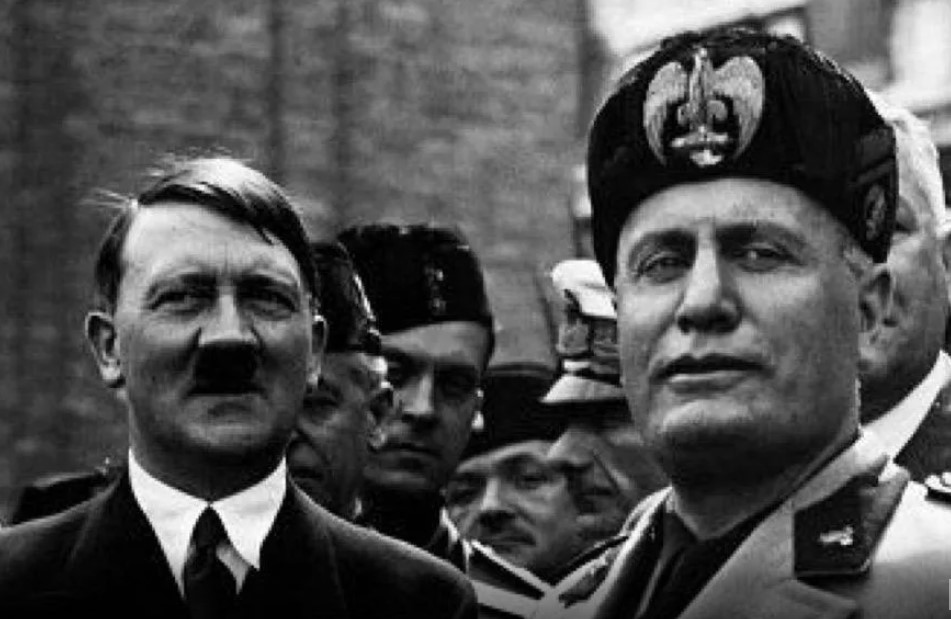
Fascist leaders of Germany and Italy.
As the revolutionary historian CLR James correctly commented in 1936:
“The ruling classes, broadly speaking, are pro-fascist. The masses are anti-fascist. In the acute crisis of world capitalism today, and the resulting political tension of all classes, the class struggle stands naked, not only at home but in foreign policy” (CLR James, ‘Baldwin’s next move’, New Leader, 3 June 1936).
The Conservatives have never had a principled opposition to anti-democratic authoritarianism. ‘Democracy’ has always been merely a means to an end for them, dispensable, if necessary, in the defence of capitalism.
Today, Truss, Braverman and Anderson are intelligent people. They know full well that the racist and neo-fascist Alt-Right tropes they are spouting are absolute nonsense. But they have seen the model of Trump in the USA – just as their predecessors drooled over Mussolini – and have decided this is their only route to power here.
1934 must be a warning from history – not just for us in the labour movement (who will need to mobilise in the same way as before against the threat), but also for Conservatives, who should think twice about the political company they keep. Playing with fire is dangerous, and as history has shown, consorting with the far right can carry huge risks once they feel they no longer need you for legitimacy. Conservative enablers in the past risked ending up face down in a ditch with bullets in the back of their heads.
[Featured photo – Mosley inspects his “troops” before the Battle of Cable Street – AP Photo/Len Puttnam/staff]

